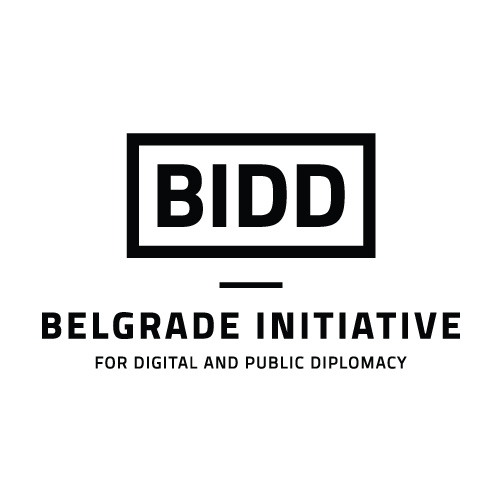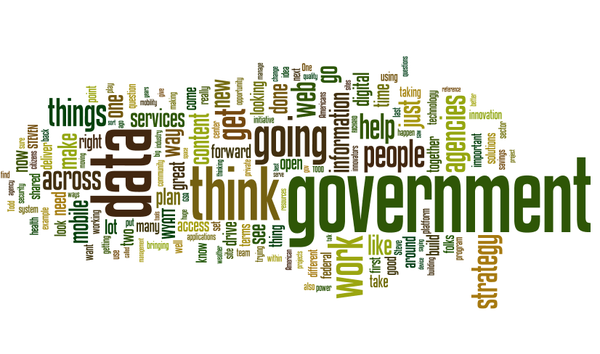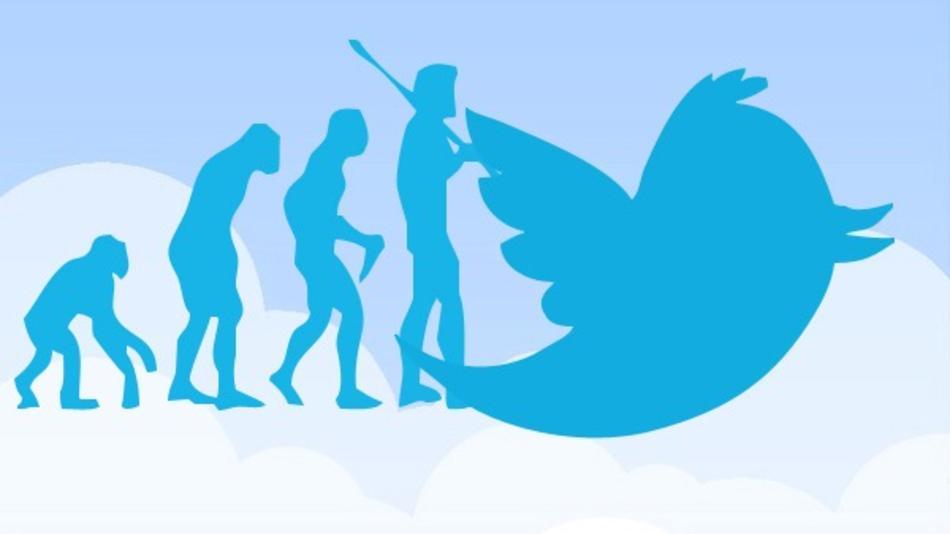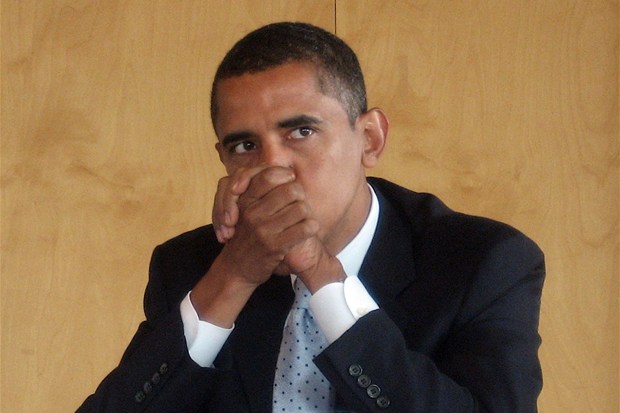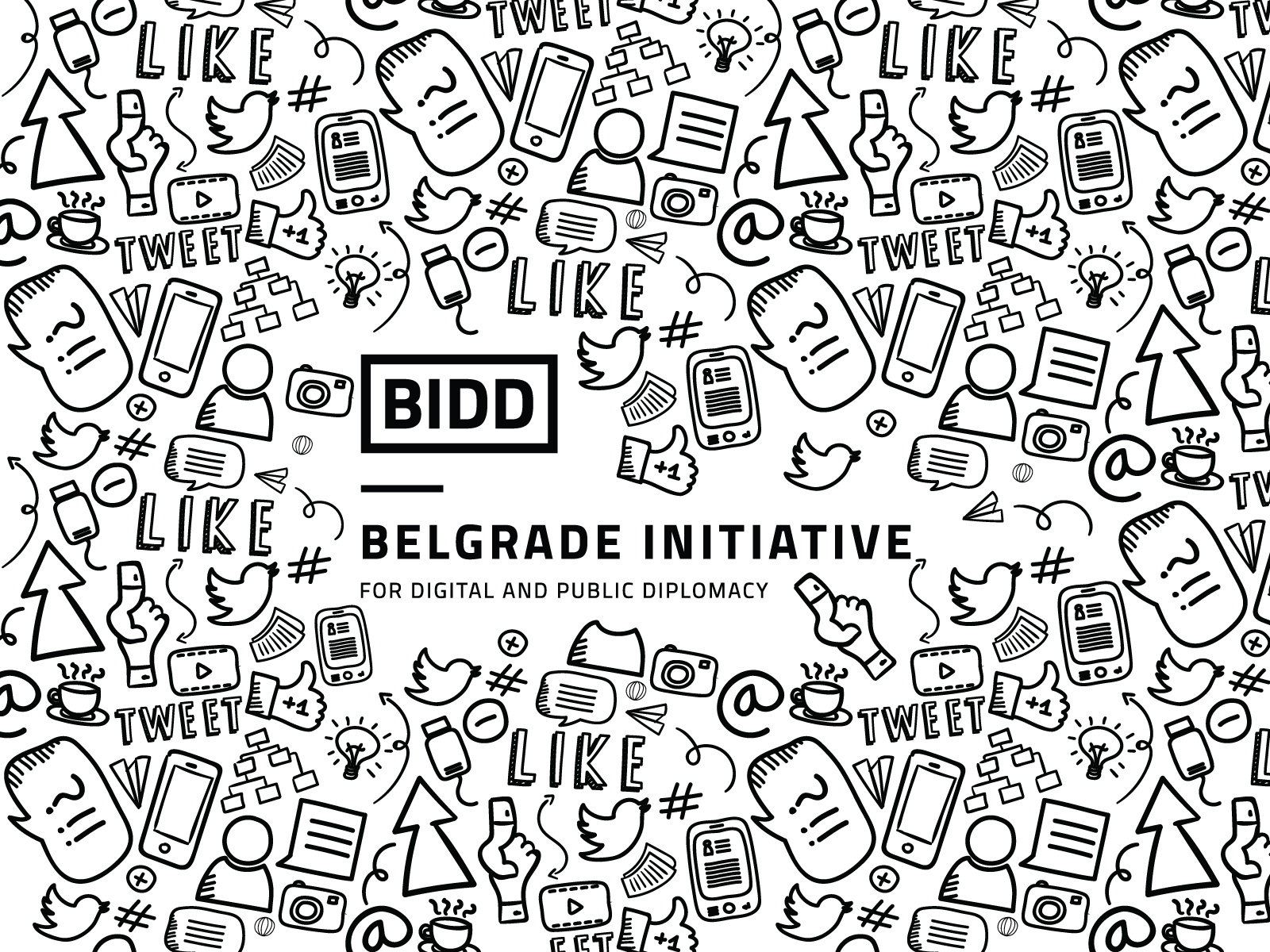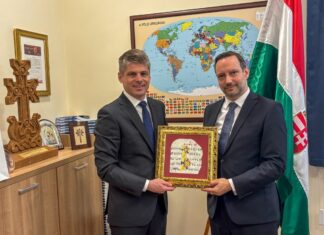Last year, Politico reported that former Hillary Clinton aide Huma Abedin had a special arrangement under which she simultaneously worked for the State Department and a corporate consulting firm.
Watchdogs and others raised questions about Abedin’s status blurring the line between private and public sector employment. She responded that the dual employment did not pose any conflict of interest, and there is no evidence Abedin used her public position to help private clients.
Soon after, we asked the State Department for a list of any other such employees. Now, after a six-month delay, the department has given us the names.
The list suggests that the status is mostly used for its intended purpose: to allow outside experts to consult or work for the government on a temporary basis.
But at least one person on the list appears to have had an arrangement similar to Abedin’s.
Caitlin Klevorick received two one-year appointments as a special government employee beginning in January 2012.
During that time, online listings show she had a private consulting firm, CBK Strategies, which advises government and corporate clients on communication and policy:
Work with diverse range of clients from Government to Fortune 100 companies to high profile individuals advising them on a range of issues including: overall strategic vision, crisis management, policy and political advising, communications, corporate social responsibility and partnerships.
“There is a very high potential for actual conflicts of interest in this case, and there is certainly every appearance of conflicts of interest,” said Craig Holman of the ethics watchdog Public Citizen.
Klevorick did not respond to our requests for comment about what outside work she did during the period she was a special employee.
Asked about the case, a State Department official said: “All of our employees that are allowed to work for non-Department of State entities are doing so with permission of the bureaus they are working with and provided their outside work does not pose a conflict of interest.”
Before joining the State Department, Klevorick had worked as a consultant to former President Clinton and to the Clinton Foundation.
Klevorick joined the State Department in 2009, as “Special Assistant for the Counselor of the Department in the Office of the Secretary.”
When she became a special government employee three years later, she “provided expert knowledge and advice to the Counselor and Chief of Staff other Department Officials on a variety of important foreign policy issues,” according to the State Department.
Klevorick’s boss was Cheryl Mills, a longtime Clinton adviser who was also a special government employee, reportedly working on Haiti issues.
The list of special government employees also includes many lifelong civil servants and the occasional celebrity, such as Olympic figure skater Michelle Kwan. She was appointed in 2012 a senior adviser for public diplomacy.
There are also scientists such as a physicist from Los Alamos National Laboratory who did not draw a salary for his work for the State Department.
Others on the list have ties to Democratic politics but their work did not appear to raise any potential conflict of interest.
Longtime pollster Jeremy Rosner, for example, was made a special government employee in 2011. He moved to Pakistan temporarily to serve as a public affairs consultant to the U.S. embassy in Islamabad providing “expert level advice to the Chief of Mission on how best to exploit new media tools by all agencies at Mission Pakistan,” according to the State Department.
Here is the full list from the State Department.
And here is a list of special government employees from other agencies.
ProPublica: State Department Finally Releases List of ‘Special Government Employees’
CPD contributors author new paper on public diplomacy and Kosovo’s diaspora *Jul 19, 2012
 CPD contributors Behar Xharra and Martin Waehlisch have published a new paper on the topic of Kosovo’s diaspora as a resource for public diplomacy. With assistance from CPD Research Intern Aleksandra Ristovic, the authors explore the challenges this budding nation has faced in projecting a positive image abroad, and the potential for the diaspora to contribute positively, rather than negatively, to that image.
CPD contributors Behar Xharra and Martin Waehlisch have published a new paper on the topic of Kosovo’s diaspora as a resource for public diplomacy. With assistance from CPD Research Intern Aleksandra Ristovic, the authors explore the challenges this budding nation has faced in projecting a positive image abroad, and the potential for the diaspora to contribute positively, rather than negatively, to that image.
Behar and Waehlisch argue that Kosovo’s diaspora is now perceived primarily as a provider of remittances, yet in fact its role is evolving in ways that could reinforce the country’s diplomatic and economic development. They provide suggestions as to ways to enhance the role of diaspora in ways beneficial to the nation by using the tools of public diplomacy.
To read this paper in full, click here.
The authors previously published a paper “Public Diplomacy of Kosovo: Status Quo, Challenges and Options” in the CPD Perspectives on Public Diplomacy series in 2011.
3 Tips For Effective Social Media Customer Service [INFOGRAPHIC]
![3 Tips For Effective Social Media Customer Service [INFOGRAPHIC]](http://www.bidd.org.rs/wp-content/plugins/RSSPoster_PRO/cache/914c1_contact-us-keyboard.png)
Over the last few years there’s been a huge shift towards using platforms such as Twitter and Facebook for customer service, with one in three social media users preferring to contact companies via these channels than over the phone.
Moreover, 87 percent of consumers said that their online social interaction with a company positive impacted the likelihood that they would go on to purchase from the brand. This infographic from In The Chat takes a closer look at the shift to social media customer service and provides three tips on how to implement this within your strategy.
![3 Tips For Effective Social Media Customer Service [INFOGRAPHIC]](http://www.bidd.org.rs/wp-content/plugins/RSSPoster_PRO/cache/6fa87_social-media-shift.png)
(Source: In The Chat. Customer support image via Shutterstock.)
[Today in PD] Sochi Flame Lighter Blames Racist Obama Tweet On Hackers
 Irina Rodnina, the former figure skater who lit the Olympic flame at the opening ceremony of the Sochi Games, has claimed that a racist photo of Barack Obama she tweeted last year was the fault of hackers.
Irina Rodnina, the former figure skater who lit the Olympic flame at the opening ceremony of the Sochi Games, has claimed that a racist photo of Barack Obama she tweeted last year was the fault of hackers.
Rodnina, who won three Olympic gold medals in pairs skating in 1972, 1976 and 1980, is now an MP from Vladimir Putin’s United Russia party. She was chosen, along with former ice hockey star Vladislav Tretyak, to carry the flame out of the Fisht stadium on Friday night, and light the flame outside.
Rodnina tweeted the altered photograph, of the US president chewing while a hand in the foreground proffers him a banana, in September. It created a scandal online but at the time Rodnina was unrepentant, writing: “Freedom of speech is freedom of speech and you should answer for your own hang-ups.” She also accused the opposition politician Alexei Navalny of co-ordinating the online anger about the photograph.
At the time, the US ambassador to Russia, Michael McFaul, reacted with fury to the Twitter post, describing it as “outrageous behaviour, which only brings shame to her parliament and country”. A spokesperson for the US embassy quoted Thomas Jefferson in response to Rodnina’s tweet, saying: “Bigotry is the disease of ignorance.”
Since then, Rodnina has never distanced herself from the photo. But after some media questioned whether it was appropriate for her to have lit the Olympic flame, her tone has changed.
In a pair of English-language tweets on Monday, she wrote: “I respect the Obama family and apologise for not clearly stating earlier that I don’t support the tweeted photo or racism in any form. My account was hacked and I should have shown better judgement in my initial response and handling of the event.”
After Rodnina had lit the Olympic flame after the ceremony on Friday, the Sochi 2014 organising chief, Dmitry Chernyshenko, defended the selection of a pro-Kremlin MP as the choice for the coveted role.
“Any political talks or discussions are not appropriate for the Olympic Games,” he said. “Irina Rodnina is one of the most respected Olympic athletes in the world and I want to stress the Olympics is not about politics.”
Terrorism: A Definition and Analysis
How do you Define Terrorism? What are your Justifications for this Definition?
In 1956 political theorist and philosopher Walter Gallie delivered a paper to the Aristotelian Society in which he coined the term “essentially contested concept.” In Gallie’s words, these are “concepts the proper use of which inevitably involves endless disputes about their proper uses on the part of their users.”[1] Fellow philosopher John Gray built upon Gallie’s conceptual definition, adding that disputes on such contested concepts “cannot be settled by appeal to empirical evidence, linguistic usage, or the canons of logic alone.”[2] One can see from the development of Terrorism Studies over the last four decades that the term terrorism itself undoubtedly fits the framework of Gallie’s “essentially contested concept.” Alex Schmid and Albert Jongman’s Political Terrorism, for example, offers over 100 differing definitions given by surveyed experts when asked to define the term.[3] In their words, “authors have spilled almost as much ink (trying to define the concept) as the actors of terrorism have spilled blood.”[4]
Despite subscribing to the belief that terrorism is indeed an “essentially contested concept”, destined to be subject to reformulation and argument, my definition of terrorism coincides with that of Christopher Mitchell et al.:
In sum, terrorism by the state (or non-state actors) involves deliberate coercion and violence (or the threat thereof) directed at some victim, with the intention of inducing extreme fear in some target observers who identify with that victim in such a way that they perceive themselves as potential future victims. In this way, they are forced to consider altering their behavior in some manner desired by the actor.”[5]
This characterisation makes it clear that terrorism is a strategy, not an ideology, psychology, or mind set, and it is the burden of this paper to justify my chosen definition. I will do this by deconstructing the definition in to its individual components, analyzing them, and offering supportive evidence and examples to strengthen its credibility. The four main focuses of this essay will be: 1) Why do we need to define terrorism?; 2) States and non-state actors as perpetrators of terrorism; 3) Target-victim differentiation and the spread of terror amongst a wider population; 4) Objectives and the desire of terrorism to alter behaviour.
Why do we Need a Single Definition?
First, we must decipher whether a definition is required. It may be argued that agreeing upon a definition is an exercise in futility: we would like to develop one, but do we actually need one? Is striving to define the term a “hopeless undertaking”, as Laqueur suggests?[6] In the words of Louise Richardson: “like pornography, we know terrorism when we see it.”[7] If this is the case, why define it?
It is the belief of this author that a definition is indeed needed, if not wholly agreed upon,[8] not only to allow for clearer debate amongst the social sciences, but also to protect victims of terrorism under international law, where the term terrorism is yet to be defined definitively. The misidentification of terrorism and haphazard labelling of any form of violence as terrorism does nothing to aid the cause of those victim to “true” terrorism. In “Defining ‘Terrorism’ to Protect Human Rights”, Ben Saul writes:
‘Terrorism’ currently lacks the precision, objectivity and certainty demanded by legal discourse. Criminal law strives to avoid emotive terms to prevent prejudice to an accused, and shuns ambiguous or subjective terms as incompatible with the principle of non-retroactivity. If the law is to admit the term, advance definition is essential on grounds of fairness, and it is not sufficient to leave definition to the unilateral interpretations of States. Legal definition could plausibly retrieve terrorism from the ideological quagmire… Ultimately it must do so without criminalizing legitimate violent resistance to oppressive regimes – and becoming complicit in that oppression.[9]
The definition I present on behalf of Mitchell et al. is not necessarily the “advance definition” that Saul calls for, but I believe it to be a move in the right direction. It is an attempt to move towards an objective conceptualization of the term under review, preventing the issues that arise from the “unilateral interpretations of states.” It is also “fair”, in that it accepts both states and non-state actors as perpetrators of terrorism violence and is only applicable to certain types of political violence with extremely particular intentions.
State and Subnational Actors as Perpetrators of Terrorism
In terrorism studies the onus has traditionally been on the subnational actor as a perpetrator of violence directed at civilian populations or state apparatus. Definitions of the term reflect this direction of inquiry, with given examples of terrorist acts exclusively vindicating non-state actors such as the Tamil Tigers, al Qaida, ETA, The Provisional IRA and the PLO, to name but a few. The comprehensive RAND Database of Worldwide Terrorism Incidents also reflects this trend.[10]
The result of this phenomenon is that traditional definitions of terrorism have often failed to recognize the state as a perpetrator of terrorist acts, or at least to label their actions as terrorism. Hoffman, for example, seeks to draw a firm line in the sand between what he sees as “terrorism”, “perpetrated by a subnational group or non-state entity”, and “terror”, that which is perpetrated by the state or those already in power.[11] Other ‘orthodox’ scholars such as Jenkins (1980) and Wilkinson (1981) also chose to recognize this distinction.[12] I see no reason why there should be a difference in terminology, as, in agreement with Ruth Blakeley, I believe that a definition of terrorism should be action based, rather than actor based.[13]
It is scholars such as Blakeley who have highlighted this actor-centric approach as a pitfall of the way in which terrorism is understood and studied:[14] how traditional definitions of terrorism have often failed to recognize the state as a guilty party, or at least to label their actions as terrorism in the sense that Mitchell et al. have conceptualized it. In Understanding Terrorism, Gus Martin asserts that “political violence by the state is the most organized and potentially most far-reaching application of terrorist violence.”[15] As stated, Blakeley shares this view, further commenting that: “(State terrorism)… is one of a number of repressive tools that great powers from the North have used extensively in the global South in the service of foreign policy objectives.”[16]
During the course of history states have been known to either violently repress their citizens internally using terror methods or to tacitly sponsor foreign states or paramilitary groups (with intelligence sharing, funding or military training) with the intent of removing unfavourable regimes or promoting their own state interests.[17] The US is a prime example of this, particularly during the Cold War years. The US public’s disdain at the failures of the Vietnam War meant that covert sponsorship of proxies was a favoured method of exacting political change in the international system. Important examples of state terrorism or state-sponsored terrorism that exemplify why the state must be involved in any definition of the term would be US sponsorship of the anti-Sandinista movement Contras in Nicaragua in the early 80s, the US’ attempted “neutralization” of the NLF (Operation Phoenix) during the Vietnam War[18], or, historically, actions carried out by state enforcers during Stalin’s “Great Terror” in the 20s and 30s. Torture, disappearings, indiscriminate killing and rape were just some of the tactics used by the state or their paramilitary proxies, showing that the state can also be guilty of using violence/threatening to use violence with the intention of inducing extreme fear in some target observers who identify with the victim in such a way that they perceive themselves as potential future victims and change their behavior as a consequence of the act(s). Thus, it is imperative that one includes the state in any definition of terrorism, whether as an indirect or direct actor, as Mitchell et al. have.
Inducing Extreme Terror Amongst a Wider Audience
In Political Terrorism Schmid and Jongman classify this characteristic of terrorism as “victim-target differentiation” – where the victims of attacks are not necessarily the intended target of coercion – finding that 51% of the 109 scholars who supplied definitions of terrorism included this characteristic.[19] Wilkinson famously distinguishes terrorism as being “a special form of political violence…directed at a wider audience or target than the immediate victims of the violence,”[20] and Mitchell et al. agree that “the creation of fear must be a means towards an end.”[21] Asta Maskaliunaite summarises the importance of this characteristic of terrorism particularly well, writing:
…Terrorism does not care about the victim itself. It is not what happens to the victim that is important, but how the fact of what happens to it will affect the target audience… This factor is closely related to creating the atmosphere of fear… Attacking a somewhat symbolic victim, it aims at producing the aforementioned atmosphere of fear, as a part of the population identifies itself with the victim and sees itself in its place.[22]
This seems to fit with terrorism’s history of symbolic targeting (high-ranking government officials or paramilitary/organisational leaders, for example) or, in more recent history, committing violence against “soft” targets (civilians, neutrals and non-combatants). The symbolic nature of targets, as mentioned by Maskaliunaite above, supports the idea that the intended goal of terrorism is to create extreme fear amongst an audience beyond the direct victim of the act. A poignant example of this would be Guatemalan “counterinsurgency” operations in the early 70s and 80s, where the state terrorized their rural populations in an attempt to prevent them supporting anti-state guerrilla networks. An Amnesty International report from 1976 states that local newspapers were allowed to publish images of death and torture as a warning to citizens to not to oppose the government,[23] thus reaffirming the idea that terrorism’s goal is to spread terror far beyond the victim(s) in an attempt to modify behaviour. Terror spread from the rural populations to the state as a whole.
At non-state level, Al-Qaida’s attack on the Twin Towers in 2001 was carried out to spread terror amongst the West, not just the United States. 3,000 people were killed as a result of those attacks, but the ‘success’ of the operation came when civilians began to believe that they could be next: if Al Qaida were willing to kill 3,000 innocent civilians, what would stop them trying to attack us next? The New York Times’ headline on September 12th even labelled the previous day as a “day of Terror.”[24] In line with Mitchell et al.’s definition and Maskaliunaite’s statement, there were target observers who identified with the victims in such a way that they perceived themselves as potential future victims and the terror spread. The Madrid train bombings in 2004 and 7/7 London bombings gave birth to this perception in Spain and Britain also – all three targets were supposedly in “safe” territory, thousands of miles from the Middle East. The aim of al Qaida was to create such a widespread atmosphere of fear that these Western powers reconsidered their foreign policy in regards to the Middle East, a political objective.[25] To count as “true” terrorism, an actor “must have the (primary) intention of inducing extreme fear in some population of observers.”[26] All given cases exemplify this intention.
Political Objectives and Altering Behavior
The question of objectives and the idea of altering behavior run parallel to one another. Bruce Hoffman writes that terrorism is “ineluctably political in aims and motives,”[27] finding support in this assertion from Crenshaw (1983), Backs and Jesse (1985), Crozier (1974) and Jenkins (1980), amongst others.[28] Alex Schmid also found a concurrence in the word ‘political’ in terms of motive in his 2004 study[29] and Wilkinson writes that “terrorism is used to try and influence political behaviour in some way; for example to force opponents into conceding some or all of the perpetrators’ demands, to provoke an over-reaction, to serve as a catalyst for more general conflict, or to publicise a political cause.”[30] In contrast to Blakeley (2010), in regards to terrorism by the state, I also see any act designed to spread terror amongst a wider audience to ensure subordination (to the state or government) as a political objective.
One can see the link between political objectives and the aim of modifying behaviour in the example previously given of 1970s and 80s Guatemala. The government’s immediate aim was to modify the behavior of the rural populations in regards to their support for anti-state guerilla movements, spreading terror and ultimately quashing its primary support base.[31] The state did this by parading tortured and dying victims in front of their families and releasing images of torture and mutilation in state newspapers. The over-arching political objective, however, was to remove oppostion and strengthen or consolidate the regime. The same can be seen in the Salvadoran Civil War, where the military-led government (funded by the US) deployed death squads against the civilian population during their war against the left-wing Farabundo Marti National Liberation Front (FMLN).[32] Acts of terrorism on behalf of the state are generally designed to alter the behaviour of certain groups through coercion or to force continued subordination.
In terms of non-state terrorism, actions by the Tamil Tigers in Sri Lanka had the ultimate political goal of creating a separate autnomous state for the Tamil people in the North, including economic self-determination,[33] and the IRA fought for the reunification of Ireland. In Palestine, Hamas is “working to create conditions conducive to emancipating the Palestinian people”, “delivering them from tyranny” and “liberating their land from the occupying usurper.”[34] These are undoubtedly political objectives, and it is this author’s belief that the motives for the utilization of terrorist tactics can ultimately be traced back to the political realm, whether due to political or social discrimination or issues such as unequal economic distribution.[35] Whether objectives of non-state groups are maximalist (demands over ideology, beliefs or values) or limited (demands over territory),[36] the centrality of politics and attempting to alter state behaviour – often by forcing costs on them that lead to constant cost-benefit analysis of continued conflict – cannot be understated. It is therefore a justifiable characteristic of my chosen definition.
Conclusion
Terrorism is an “essentially contested concept”, there will probably never be a universally agreed upon definition of the term. It is both subjective and pejorative by its very nature, something universally accepted amongst terrorism scholars. This does not mean, however, that the international community (and scholars of terrorism studies alike) should not strive to move towards agreement at least upon the characteristics of terrorism. In agreement with Ben Saul, I see this as necessary if we are to sufficiently protect victims of terrorism under international law in regards to human rights violations, for example.
Mitchell et al.’s definition of terrorism is as close to a concise, objective definition as one can get. Firstly, it highlights that both non-state and states can be perpetrators of terrorism. Despite history showing this to be an indisputable fact, many definitions of terrorism fail to recognise states as perpetrators and many analyses’ have been guilty of the same shortcoming.[37] US state terrorism by proxy in Latin America during the Cold War is a poignant example of the phenomenon that is state terrorism. There are many other such examples, but the scope of this essay did not allow for an extensive list.[38]
My chosen deifnition stresses the aim of terrorism to be the creation and spread of extreme terror amongst a wider population than that targeted. As Schmid and Jongman highlight, this is an accepted characteristic of any definition of terrorism, labelling it “victim-target differentation” in their analysis. Examples from 1970s and 80s Guatemala, the Salvadoran Civil War, 9/11 and the 2004 and 2007 Madrid and London bombings highlight how the aim of terrorism is to induce extreme fear in some target observers who identify with the victim(s) of the attack(s) in such a way that they perceive themselves as potential future victims, thus spreading terror and altering their behaviour.
The desire to alter behaviour is poignant in the execution of a terrorist attack. States will often commit attrocities against their own population, or another state’s population via proxy, as a means of changing the political order, coercing a particular group, or ensuring widespread subordination by cementing their position as those with a monopoly of violence. In agreement with Hoffman, I see terrorism as “ineluctably political in its aims and motives”, and see this reflected in the examples given of the Tamil Tigers and their desire to create a separate Tamil state, Hamas’ goal of Palestinian liberation, and state terrorism against the civilian populations and guerilla factions in El Salavdor and Guatemala. Mitchell et al.’s proposed definition stresses the altering of behaviour as an explicit goal, where the ultimate objectives of terrorists, whether maximalist or limited, are political. The evidence would suggest this to be true in the vast majority of examples of terrorism.
Bibliography
Abrahams, Max, “Why Terrorism Does Not Work”, International Security, 31(2), (Massachusetts: The MIT Press, 2006), pp. 42-78
AI (Amnesty International) (1976) ‘Guatemala’, Amnesty international Briefing Papers, 8, (London: Amnesty International)
Blakeley, Ruth, “Bringing the State Back Into Terrorism Studies”, European Political Science 6(3), (London: Palgrave Macmillan, 2007), pp. 228-235
Blakeley, Ruth, State Terrorism and Neoliberalism: The North in the South, (London: Routledge, 2009)
Blakeley, Ruth, “State Terrorism in the Social Sciences: Theories, Methods and Concepts”, in Jackson, Richard, Murphy, Eamon Poynting, Scott (eds.), Contemporary State Terrorism, (Abingdon: Routledge, 2010), pp. 12-27
Corlett, J. Angelo, Terrorism: A Philosophical Analysis, (Netherlands, Kluwer Academic Publishers, 2003)
Gibbs, J. P., “Conceptualization of Terrorism”, American Sociological Review, 54(3), (Washington: American Sociological Review, 1989), pp. 329-340
Gallie, W. B., “Essentially Contested Concepts”, Proceedings of the Aristotelian Society, 56, (New Jersey: Wiley, 1956), pp. 167-198
Gray, John N., “On the Contestability of Social and Political Concepts”, Political Theory, 5(3), (California: Sage Publications, 1977), pp. 331-348
Hoffman, Bruce, Inside Terrorism, (New York: Columbia University Press, 2006)
Jenkins, Brian, The Study of Terrorism: Definitional Problems, (The RAND Corporation: The RAND Paper Series, 1980)
Kydd, Andrew H. Walter, Barbara F., “The Strategies of Terrorism”, International Security, 31(1), (Cambridge: The MIT Press, 2006), pp. 49-79
Martin, Gus, Understanding Terrorism: Challenges, Perspectives and Issues, (California: Sage Publications, 2013)
Maskaliunaite, Asta, “Defining Terrorism in the Political and Academic Discourse”, Baltic Defence Review, 8(2) (Tartu: Baltic Defence College, 2002), pp. 36-50
Mitchell et al., Christopher, “State Terrorism: Issue of Concept and Measurement”, in Stohl, Michael Lopez, George A. (eds.) Government Violence and Repression: An Agenda for Research, (New York: Greenwood Press, 1986), pp. 1-25
Saul, Ben, “Defining ‘Terrorism’ to Protect Human Rights”, in Sydney Law School Legal Studies Research Paper, No. 08/125 (2008)
Schmid, Alex, “The Problem of Defining Terrorism”, Presented at a conference on Terrorism and Security Studies, George Marshall Defence Center, Garmisch Germany, June 2004, pp. 1–30
Schmid, Alex, “Terrorism – The Definitional Problem”, Presented at the War Crimes Research Symposium: “Terrorism on Trial” at Case Western Reserve University School of Law, Oct. 8, 2004
Schmid, Alex Jongman, Albert, Political Terrorism: A New Guide to Actors, Authors, Concepts, Data Bases, Theories, Literature. (Amsterdam: North Holland, Transaction Books, 1988)
Wilkinson, Paul, “Can the State be Terrorist?”, International Affairs, 57(3), (London: Wiley, 1981), pp. 467-472
Wilkinson, Paul, “International Terrorism”, in Baylis, J. Rengger, N. (eds.), Dilemmas of World Politics, (Oxford: Oxford University Press, 1992), pp. 228-267
Valentine, D., The Phoenix Program, (Lincoln: Authors Guild BackinPrint.com, 2000)
Websites:
Human Rights Watch World Report 1992 – El Salvador
Accessed on: http://www.refworld.org/cgi-bin/texis/vtx/rwmain?page=countrycategory=publisher=HRWtype=coi=SLVrid=4562d94e2docid=467fca47cskip=0
(01/11/2013)
New York Times, 12th September 2001
Accessed on: http://www.nytimes.com/packages/html/nyregion/9-11imagemap.html
(03/11/2013)
RAND Database of Worldwide Terrorism Incidents
Accessed on: http://smapp.rand.org/rwtid/search_form.php
(24/10/2013)
Richardson, Louise “What Terrorists Want”
Accessed on: http://www.nytimes.com/2006/09/10/books/chapters/0910-1st-rich.html?pagewanted=all_r=0
(30/10/2013)
Yusufzai, Rahimullah, “Face to face with Osama”
Accessed on: http://www.theguardian.com/world/2001/sep/26/afghanistan.terrorism3 (0/11/2013)
[1] W. B. Gallie, “Essentially Contested Concepts”, Proceedings of the Aristotelian Society, 56, (New Jersey: Wiley, 1956), pp. 167-198, 169
[2] John N. Gray, “On the Contestability of Social and Political Concepts”, Political Theory, 5(3), (California: Sage Publications, 1977), pp. 331-348, 344
[3] Alex Schmid Albert Jongman, Political Terrorism: A New Guide to Actors, Authors, Concepts, Data Bases,
Theories, Literature, (Amsterdam: North Holland, Transaction Books, 1988), 28
[4] Ibid., xiii
[5] Christopher Mitchell et al., “State Terrorism: Issue of Concept and Measurement”, in Michael Stohl George A. Lopez (eds.) Government Violence and Repression: An Agenda for Research, (New York: Greenwood Press, 1986), pp. 1-25, 5 – *to this definition I add the notion that the ultimate objective of terrorism is a political objective
[6] Walter Laqueur, Terrorism, 6; cited in J. Angelo Corlett, Terrorism: A Philosophical Analysis, (Netherlands, Kluwer Academic Publishers, 2003), 113
[8] This is not to suggest that the formulation of such a definition is not possible in the future
[11] Hoffman, Inside Terrorism, 15-16
[12] Wilkinson (1992) eventually choses to recognise states as perpetrators of “terror violence”, see Paul Wilkinson, “International Terrorism”, in J. Baylis N. Rengger (eds.), Dilemmas of World Politics, (Oxford: Oxford University Press, 1992), pp. 228-267, 229
[13] Ruth Blakeley, “State Terrorism in the Social Sciences: Theories, Methods and Concepts”, in Richard Jackson, Eamon Murphy Scott Poynting (eds.), Contemporary State Terrorism, (Abingdon: Routledge, 2010), pp. 12-27, 13
[14] Ruth Blakeley, “Bringing the State Back Into Terrorism Studies”, European Political Science 6(3), (London: Palgrave Macmillan, 2007), pp. 228-235
[15] Martin, Understanding Terrorism, 93
[16] Blakeley, “Bringing the State Back Into Terrorism Studies”, 228
[17] Ibid., 232; see also Martin, Understanding Terrorism, 93-109
[18] D. Valentine, The Phoenix Program, (Lincoln: Authors Guild BackinPrint.com, 2000), 85 – estimates of deaths as a direct result of Operation Phoenix range from 20,000 to 40,000, and include huge numbers of women and children non-combatants; see also Mitchell et al., “State Terrorism: Issue of Concept and Measurement”, 6, for a more detailed discussion of events
[19] Schmid Jongman, Political Terrorism, 5
[20] Wilkinson, “International Terrorism”, 228
[21] Mitchell et al., “State Terrorism: Issue of Concept and Measurement”, 4
[22] Asta Maskaliunaite, “Defining Terrorism in the Political and Academic Discourse”, Baltic Defence Review, 8(2) (Tartu: Baltic Defence College, 2002), pp. 36-50, 46; see also Mitchell et al., “State Terrorism: Issue of Concept and Measurement”, 4
[23] AI (Amnesty International) (1976) ‘Guatemala’, Amnesty international Briefing Papers, 8, (London: Amnesty International), quoted in Blakeley, “State Terrorism in the Social Sciences”, 18
[26] Mitchell et al., “State Terrorism: Issue of Concept and Measurement”, 6
[27] Hoffman, Inside Terrorism, 40
[28] Schmid Jongman, Political Terrorism, 33-37; see also Pedahzur Weinberg Hirsh-Hoefler, as cited in A. Spencer, “Questioning the Concept of ‘New Terrorism’”, Peace, Conflict and Development, 8, (2006), 3 – this is by no means a consensus however, with Laqueur (1996) and Corlett (2003), amongst others, disagreeing with this notion
[29] Alex Schmid, “Terrorism – The Definitional Problem”, Presented at the War Crimes Research Symposium: “Terrorism on Trial” at Case Western Reserve University School of Law, Oct. 8, 2004 – According to Schmid, 68% of definitions studied included this term
[30] Wilkinson, “International Terrorism”, 229
[31] Blakeley, “State Terrorism in the Social Sciences”, 17-19
[33] Velupillai Pirapharan, Tamil Eeelam website; cited in Martin, Understanding Terrorism, 47
[34] Palestinian Information Center, Hamas website; Ibid.
[35] I make this assertion because I believe that these issues are ultimately caused by a central government or regime and can therefore be addressed by them also
[36] See Max Abrahams, “Why Terrorism Does Not Work”, International Security, 31(2), (Massachusetts: The MIT Press, 2006), pp. 42-78 for a discussion on the objectives and tactics of non-state terrorism
[37] This is often associated with traditional, or “orthodox” terrorism studies; I admit that the birth of the critical movement over the last decade (and even some examples from before) has resulted in a greater recognition of the state and terrorism
[38] See Blakeley, State Terrorism and Neoliberalism: The North in the South, (London: Routledge, 2009) for a more detailed and extensive coverage of the issue of state terrorism
—
Written by: Luke Johns
Written at: University of Kent
Written for: Dr Ruth Blakeley
Date written: 12/2013
KLM Royal Dutch Airlines Introduces Payment Via Twitter And Facebook

Picture the scene: you’re looking to travel somewhere nice for your vacation, and you’re using Twitter to search out good ideas from friends and contacts. You find the perfect place, but, oh… you have to leave Twitter to actually book your flight, like some kind of savage.
Not no more. KLM Royal Dutch Airlines has developed a method of payment which enables customers using Twitter or Facebook to book or rebook a flight, make a seat reservation, or to arrange extra baggage, can now pay through these channels.
Here’s how it works: KLM sends a link to the customer in a private message on Facebook or Twitter. The customer can then select their preferred method of payment and complete the transaction. The social media service agent at KLM then receives a message to say that payment has been received and the customer in turn receives confirmation of the payment.

The 130 social media agents at KLM answer around 35,000 queries on Facebook and Twitter every week. Last week KLM welcomed its five-millionth Facebook fan, making KLM the airline with the most fans in the world.
KLM Royal Dutch Airlines was founded in 1919, making it the world’s oldest airline still operating under its original name.
Emerging Nations Embrace Internet, Mobile Technology
Cell Phones Nearly Ubiquitous in Many Countries
Survey Report
 In a remarkably short period of time, internet and mobile technology have become a part of everyday life for some in the emerging and developing world. Cell phones, in particular, are almost omnipresent in many nations. The internet has also made tremendous inroads, although most people in the 24 nations surveyed are still offline.
In a remarkably short period of time, internet and mobile technology have become a part of everyday life for some in the emerging and developing world. Cell phones, in particular, are almost omnipresent in many nations. The internet has also made tremendous inroads, although most people in the 24 nations surveyed are still offline.
Meanwhile, smartphones are still relatively rare, although significant minorities own these devices in countries such as Lebanon, Chile, Jordan and China.
People around the world are using their cell phones for a variety of purposes, especially for texting and taking pictures, while smaller numbers also use their phones to get political, consumer and health information. Mobile technology is also changing economic life in parts of Africa, where many are using cell phones to make or receive payments.
 While the internet still has a limited reach in the emerging and developing world, once people do gain access to the internet, they quickly begin to integrate it into their lives. A significant number of people in these nations say they use the internet on a daily basis, including roughly half of those polled in Lebanon, Russia and Argentina. At least 20% use the internet daily in 15 of the 24 nations surveyed.
While the internet still has a limited reach in the emerging and developing world, once people do gain access to the internet, they quickly begin to integrate it into their lives. A significant number of people in these nations say they use the internet on a daily basis, including roughly half of those polled in Lebanon, Russia and Argentina. At least 20% use the internet daily in 15 of the 24 nations surveyed.
In 21 of 24 nations, a majority of internet users also participate in sites like Facebook and Twitter (see here for a country by country list of social networking sites).
People are using social networking sites to stay in touch with family and friends and to share their views on an array of topics, including popular culture, religion and politics.
These are among the main findings of a Pew Research Center survey conducted among 24,263 people in 24 emerging and developing economies from March 2, 2013 to May 1, 2013. All interviews were conducted face-to-face.
The survey also finds that using the internet – like many other forms of communication technology – is significantly more common among young people (see here for data on age differences for several key technology usage questions). In 14 of 24 nations, at least half of 18-29 year-olds say they are online. Internet use is also correlated with national income, as richer nations tend to have a higher percentage of internet users.
Similarly, smartphone ownership is more common in countries with higher levels of per capita income. Traditional cell phones still outnumber smartphones, although roughly three-in-ten or more Lebanese, Chileans, Jordanians, Chinese, Argentines, South Africans, Malaysians and Venezuelans now own a smartphone.
People use their cell phones for many things, but texting is especially popular. In 22 of 24 countries, most cell phone owners send text messages. Mobile phones are also widely used for taking pictures or video – at least half of cell phone owners use their devices for this in 15 nations.
 While making or receiving payments is one of the least common cell phone activities, it is much more common in the region where mobile money is a phenomenon – Africa, and more specifically, Kenya and its neighbor Uganda. Nearly seven-in-ten Kenyans (68%) who own a cell phone say they regularly use their mobile device to make or receive payments. Half in Uganda say this as well. Meanwhile, even though only 29% of mobile owners in South Africa and 24% in Senegal say they use their phones for monetary transactions, these are still among the highest percentages across all the countries surveyed. Only in Russia (24%) do as many cell owners use their device for such purposes. In the 18 countries surveyed outside of sub-Saharan Africa, a median of only 8% use their cell phones for making and receiving payments.
While making or receiving payments is one of the least common cell phone activities, it is much more common in the region where mobile money is a phenomenon – Africa, and more specifically, Kenya and its neighbor Uganda. Nearly seven-in-ten Kenyans (68%) who own a cell phone say they regularly use their mobile device to make or receive payments. Half in Uganda say this as well. Meanwhile, even though only 29% of mobile owners in South Africa and 24% in Senegal say they use their phones for monetary transactions, these are still among the highest percentages across all the countries surveyed. Only in Russia (24%) do as many cell owners use their device for such purposes. In the 18 countries surveyed outside of sub-Saharan Africa, a median of only 8% use their cell phones for making and receiving payments.
Cell Phone and Smartphone Ownership
More than half of the population in each of the nations surveyed say they own a cell phone. Roughly nine-in-ten or more own mobile phones in Jordan (95%), China (95%), Russia (94%), Chile (91%) and South Africa (91%).
Cell phone ownership rates have skyrocketed in the last decade in most of the nations where data on trends is available. The pervasiveness of cell phone ownership in these nations is in part due to a lack of landline connections. Across the 24 countries, a median of only 23% say they have a working landline telephone in their house, including as few as 1% in Ghana and Kenya. Instead, many emerging and developing nations have skipped landlines and moved straight to mobile technology.
Smartphone ownership pales by contrast – there is no country in the study where even half of the population owns a smartphone. Still, this relatively new technology is gaining a foothold in many emerging and developing nations. At least 20% have a smartphone in 11 countries.
In every country polled, there is a significant age gap on smartphone ownership, with people under age 30 much more likely than others to own an iPhone, BlackBerry, or Android device. For instance, 69% of 18- 29 year-olds in China have a smartphone, as do half or more in Lebanon (62%), Chile (55%), Jordan (53%) and Argentina (50%).
Education is also associated with smartphone ownership. In 10 nations, those with a college degree are significantly more likely to own a smartphone than are those who have not graduated from college. This is especially true in the Middle East – in Egypt, for example, 72% of college graduates have a smartphone, compared with only 13% of Egyptians without a college degree. A huge gap is also found in China, where 83% of college graduates say they own a smartphone, while just 37% of those without a college degree say the same.
Texting Most Popular Use of Cell Phones
Cell phone owners describe a wide variety of uses for their devices. Large majorities in most countries say that they regularly send text messages. Overall, a median of 78% of mobile phone users across the 24 countries send texts, making it the most popular cell phone activity (other than making calls) included on the survey.
 Taking pictures and video is also a popular activity among cell phone owners, with a median of 54% saying they do this regularly. Compared with text messaging, though, there are a wider variety of responses to this question across the countries. Cell phone owners in Latin America generally are more likely than those in other countries to use mobile phones for this purpose. For instance, two-thirds or more of cell phone owners in Venezuela (77%) and Chile (67%) say they regularly snap pictures or shoot video with their phones. But less than four-in-ten mobile owners in Tunisia (36%), Lebanon (35%), Uganda (27%) and Pakistan (19%) say the same.
Taking pictures and video is also a popular activity among cell phone owners, with a median of 54% saying they do this regularly. Compared with text messaging, though, there are a wider variety of responses to this question across the countries. Cell phone owners in Latin America generally are more likely than those in other countries to use mobile phones for this purpose. For instance, two-thirds or more of cell phone owners in Venezuela (77%) and Chile (67%) say they regularly snap pictures or shoot video with their phones. But less than four-in-ten mobile owners in Tunisia (36%), Lebanon (35%), Uganda (27%) and Pakistan (19%) say the same.
A median of only one-in-four cell phone users across the countries surveyed say they access a social networking site regularly on their phone, although a third or more do so in Chile (37%), Venezuela (37%), Lebanon (36%) and Nigeria (34%). This is less popular elsewhere, with as little as 3% in Pakistan and 10% of cell phone owners in Uganda saying they regularly use social networking sites (SNS) on their mobile device such as Facebook, Twitter, and other country-specific examples (see here for full list). Generally, this activity is more popular in Latin America and the Middle East than in Asia and Africa.
Other activities that are less popular across regions include getting political news and information (a median of 16%), getting consumer information such as the prices and availability of products (16%), getting information about health and medicine (15%) and making or receiving payments (11%).
However, there are certain countries and regions where using cell phones to get political and other information is more widespread. For instance, getting political news and information is relatively popular among cell phone owners in Venezuela (39%) and China (31%).
Getting consumer information, such as prices or availability of products, is not a very common activity among cell phone owners in any of the countries surveyed. Still, a quarter or more in Venezuela (29%), Russia (28%) and Chile (25%) say they do this regularly. Similar numbers of mobile users in Venezuela (30%) and Nigeria (28%) say they get information about health and medicine for themselves or their family.
Making or receiving payments is one of the least-used cell phone activities among the countries surveyed, but it is much more common in Africa, especially Kenya (68% of cell phone owners) and Uganda (50%). In the 18 countries surveyed outside of sub-Saharan Africa, a median of only 8% say they use their cell phones for making and receiving payments.
Internet Usage and Social Networking
 Across the 24 emerging and developing nations surveyed, the percentage of people who are online varies widely. In six nations, half or more use the internet, at least occasionally. In contrast, 25% or less go online in Indonesia (23%), Uganda (12%) and Pakistan (8%).
Across the 24 emerging and developing nations surveyed, the percentage of people who are online varies widely. In six nations, half or more use the internet, at least occasionally. In contrast, 25% or less go online in Indonesia (23%), Uganda (12%) and Pakistan (8%).
People who do go online tend to become avid users. Half or more of internet users in most of the countries surveyed say they use it daily.
Consistently, internet usage rates are higher among young people. In every nation surveyed, there are double digit age gaps between adults under age 30 and those 50 and older. And in 19 countries, the gap is more than 30 percentage points.
Internet usage is also strongly correlated with income. Generally, the higher a country’s GDP per capita, the higher its percentage of internet users. The three nations with the highest per capita incomes in this survey – Chile, Argentina and Russia – also have the highest internet usage rates. Meanwhile, these rates are especially low in two of the poorest countries surveyed, Pakistan and Uganda, where roughly nine-in-ten never go online. Some nations, such as Kenya, Jordan, Egypt and Bolivia have more people online than might be anticipated, given their per capita income.

Once people have access to the internet, they tend to engage in social networking. The most popular way in which people use social networking is staying in touch with family and friends. A near-universal median of 96% among social networking users across the 22 countries analyzed say they use SNS for this purpose (Pakistan and Uganda are excluded due to insufficient sample size). Sharing views about pop culture is also common, with a median of 73% saying they use social networks to post opinions on music and movies.

 Across 22 countries, a median of 38% among social networkers say they share views about politics using social media sites. While not as popular as staying in touch with friends or sharing music and movies, political discourse online is particularly popular in the Middle East and sub-Saharan Africa. In Lebanon, 72% of social networkers say they share views about politics. Six-in-ten or more in Egypt (64%), Jordan (63%) and Tunisia (60%) say they talk about politics on social networks. This activity is also popular in Kenya (68%) and Nigeria (62%).
Across 22 countries, a median of 38% among social networkers say they share views about politics using social media sites. While not as popular as staying in touch with friends or sharing music and movies, political discourse online is particularly popular in the Middle East and sub-Saharan Africa. In Lebanon, 72% of social networkers say they share views about politics. Six-in-ten or more in Egypt (64%), Jordan (63%) and Tunisia (60%) say they talk about politics on social networks. This activity is also popular in Kenya (68%) and Nigeria (62%).
Religion, like politics, is not at the top of the list of topics for social network users in emerging and developing nations. A median of 43% say they share views about religion on websites like Facebook and Twitter. But again, this activity is more popular in the Middle East and sub-Saharan Africa. Six-in-ten or more social networkers in Nigeria (69%), Jordan (64%), Egypt (60%), and Kenya (60%) share views about religion online. Elsewhere in Asia and Latin America, the practice is less common.
For many in emerging and developing nations, online political dialogue leads to discoveries about the political leanings of people they know. In nine countries, half or more of social networkers say they have learned that someone’s political beliefs were different than they thought, based on something that person posted on a site like Facebook or Twitter. This type of discovery is particularly common in sub-Saharan Africa and Latin America. It happens less often in Egypt, China, Jordan and Turkey.
Twitter for Diplomats: A Guide to the Fastest Growing Digital Diplomacy Tool
Twitter is not only the fastest growing form of social media around, but also a veritable initiation to digital diplomacy for most ambassadors around the globe. Indeed, 140 characters have changed the way we see the world. It has changed how foreign policy is shaped to better respond to new international challenges. In ancient Rome, the phenomenon was called Vox Populi; today it goes under many different names: from ediplomacy to Twiplomacy.
Published online by Diplo, “Twitter for Diplomats” is the first publication to analyze how social media diplomacy helps create – and maintain – a true conversation between policymakers and citizens, between diplomats and foreign publics.
The book is not a manual, nor a list of what to do or not to do. It is rather a collection of information, anecdotes, and experiences. It recounts a few episodes involving foreign ministers and ambassadors, as well as their ways of interacting with the tool and exploring its great potential. It wants to inspire ambassadors and diplomats to open and nurture their accounts – and it wants to inspire all of us to use Twitter to better listen and open our minds.
From Twitterati like US Representative to the United Nations @AmbassadorRice, on the social site since January 2009, to novices like British Ambassador to the United States @PeterWestmacott and his Greek colleague @C_Panag – who both joined earlier this month, it is no secret that all diplomats are looking at Twitter as a way to engage with foreign publics as well as their own citizens.
“Social media exposes foreign policymakers to global audiences while at the same time allowing governments to reach them instantly,” explains Italy’s Foreign Minister @GiulioTerzi in his preface to the book. “Twitter has two big positive effects on foreign policy: it fosters a beneficial exchange of ideas between policymakers and civil society and enhances diplomats’ ability to gather information and to anticipate, analyze, manage, and react to events.”
Whatever we might call this new trend in diplomacy, social media tools such as Twitter have forced diplomats and communicators alike to rethink and redesign diplomacy while putting it in to a different context. In a way, it is as if Twitter diplomacy has been altering the DNA of diplomacy: a sort of genetic adaptation to new technologies.
Adapting, however, takes time, and for diplomacy it might take even longer. Twitter is a very hands-on experience for beginners, but not everybody feels comfortable using it. This is why the need for more research and training is becoming more and more evident. In order to make the most of any digital agenda – and thus of the Twitter experience – it is key to understand how the practice of ediplomacy can contribute to a better foreign policy strategy, both at the bilateral and multilateral level, and how traditional diplomacy can be complemented by new tools.
While information technologies – and advances in the mobile sector in particular – are providing a way to better harness information, it is important to highlight the fact that diplomacies around the world are not moving away from traditional tools; rather, they are exploring new innovative ways to integrate their efforts. It is also important to notice that technology represents the means, not the reason. It is the result of ideas and as such it needs to be directed to better serve our scopes. As volatile as technology can be – mostly because it evolves constantly – what we need to focus on is not technology itself, but the nature of innovation.
Of course diplomats are not technology geeks. Nobody is expecting them to be. Rather than studying technology and applying it to their practice, the job of a diplomat must be to understand how technology can complement diplomacy. The inner working of platforms, clouds, apps, online communities, and social networks is certainly not in the nature of the diplomat’s job.
What matters is to understand how those technologies can be manipulated and shaped around foreign policy goals. As a simple guide on how everyday practitioners use Twitter to interact with people around the globe, “Twitter for diplomats” has a case-oriented approach that makes the publication “particularly useful to understand the dynamics of Twitter diplomacy,” as Foreign Minister @GiulioTerzi said.
In fact, while Twitter’s origins are far from being linked to diplomacy – as its popularity first grew within Hollywood celebrities – it is safe to say it has certainly contributed to an increase of diplomacy’s relevancy in the media and beyond, and has certainly furnished it with better outreach capabilities.
Twitter and other social media tools are a way to abstract foreign policy from state-to-state interaction and instead ‘pivot to the people’ – to quote Princeton University’s @SlaughterAM, a former director of policy planning in the US State Department (2009–2011) and a former dean of the Woodrow Wilson School of Public and International Affairs – as cabinet ministers, ambassadors, and diplomats try to engage with less traditional actors and players other than governments.
“Speaking directly to citizens – seeing a country’s people, as well as its government – is not just a rhetorical device”, explained Professor @SlaughterAM in a March 2012 article on Project Syndicate.
Twitter can be the first step in into digital diplomacy and open ourselves to a global conversation. But Twitter, Facebook, and the ocean of social media should not be the diplomatic adaptation process. We have to look beyond that. We need to realize how the power of ideas can create better results and transition traditional diplomacy to a new phase, where people are new players, and politicians and diplomats are not elites any longer.
Let’s use Twitter and all ediplomacy tools at our disposal to fully explore the digital potential and to actuate a true pivot, thus making diplomacy the most extraordinary tool our governments can have in fulfilling our foreign policy agendas and engaging with the world.
* Andreas Sandre is a Press and Public Affairs Officer at the Embassy of Italy in Washington DC. The views expressed in the article are the author’s only and do not necessarily reflect those of the Embassy of Italy. On Twitter: @andreas212nyc
By Andreas Sandre on 10 Feb 2013 | From the channel/s: E-diplomacy
http://www.diplomacy.edu/blog/twitter-diplomats-guide-fastest-growing-digital-diplomacy-tool
Ten Tips for Governments and Embassies Using Social Media
 Earlier this week, APCO Worldwide and Diplomat Magazine hosted a well-attended breakfast event in London, featuring Matt Bostrom, social media expert and senior director of APCO Online, as the guest speaker. Matt shared his insights on how diplomats, embassies and governments could best use social media to achieve their communication goals. Here are his ten tips for governments and embassies looking to use social media in the most effective way. Read them here and download the graphic version at the end of this post.
Earlier this week, APCO Worldwide and Diplomat Magazine hosted a well-attended breakfast event in London, featuring Matt Bostrom, social media expert and senior director of APCO Online, as the guest speaker. Matt shared his insights on how diplomats, embassies and governments could best use social media to achieve their communication goals. Here are his ten tips for governments and embassies looking to use social media in the most effective way. Read them here and download the graphic version at the end of this post.
1. Have a plan. The best communications start with a solid plan. Social media is no different. Planning needs to include consideration of the audience, differentiation, potential issues, and content.
2. Think about a topic of focus. It is difficult to cut through the clutter without any clear focus. Establishing a topic of focus based on your expertise will help you build a following more quickly.
3. Give and take. This is a dialogue, not a broadcast. A great way to build a following is to ask questions of your followers and answer questions they have. Invite them to ask questions.
4. Bring out your personality. Do not try to be funny if you are not funny. Do not simply broadcast news from official sources/channels. Personality goes beyond just writing in the first person; someone that follows you should get a sense of your personality.
5. Diversify channels. There is no point in setting up a specific social media channel just for the sake of it. With a good plan, you’ll know the audience you want to reach. The key is to be on the channels they are on. Don’t be afraid to experiment and try something new.
6. Provide calls to action. Ask your audience to do things. Share their thoughts, attend events, advocate or contribute stories. Build a bridge between your online audience and your offline world.
7. Share specific insights or newsworthy events. You can give your social media audience a reason to follow you by breaking news or sharing items first through social channels.
8. Train staff. It is important that the staff who support social media are well-trained in communications, social media, and crises. They should know what to do in any circumstance.
9. Apologise when needed. So many issues that break online could be solved by a simple apology. Nobody expects perfection.
10. Don’t be afraid to ask for help. The largest companies and most social savvy governments in the world use outside resources to help them get it right. Don’t be afraid to ask for help inside and outside of the organization.
Matt Bostrom is a senior director at APCO Worldwide based in London. You can follow him on Twitter @mbostrom.
http://www.apcoforum.com/ten-tips-for-governments-and-embassies-using-social-media/
Tim Berners-Lee: we need to re-decentralise the web
Twenty-five years on from the web’s inception, its creator has
urged the public to re-engage with its original design: a
decentralised internet that at its very core, remains open to
all.
Speaking with Wired editor David Rowan at an event launching the
magazine’s March
issue, Tim Berners-Lee said that although part of this is about
keeping an eye on for-profit internet monopolies such as search
engines and social networks, the greatest danger is the emergence
of a balkanised web.
“I want a web that’s open, works internationally, works as well
as possible and is not nation-based,” Berners-Lee told the
audience, which included Martha Lane Fox, Jake Davis (AKA Topiary) and Lily Cole. He suggested one example to the contrary: “What I
don’t want is a web where the Brazilian government has every social network’s data stored on
servers on Brazilian soil. That would make it so difficult to
set one up.”
It’s the role of governments, startups and journalists to keep
that conversation at the fore, he added, because the pace of change
is not slowing — it’s going faster than ever before. For his part
Berners-Lee drives the issue through his work at the Open Data
Institute, World Wide Web Consortium and World Wide Web Foundation,
but also as an MIT professor whose students are “building new
architectures for the web where it’s decentralised”. On the issue
of monopolies, Berners-Lee did say it’s concerning to be “reliant
on big companies, and one big server”, something that stalls
innovation, but that competition has historically resolved these
issues and will continue to do so.
The kind of balkanised web he spoke about, as typified by
Brazil’s home-soil servers argument orIran’s
emerging intranet, is partially being driven by revelations of
NSA and GCHQ mass surveillance. The distrust that it has brewed,
from a political level right down to the threat of self-censorship
among ordinary citizens, threatens an open web and is, said
Berners-Lee, a greater threat than censorship. Knowing the NSA may be breaking commercial encryption services could
result in the emergence of more networks like China’s Great
Firewall, to “protect” citizens. This is why we need a bit of
anti-establishment push back, alluded to by Berners-Lee.
He reiterated the need to protect whistleblowers like Edward Snowden that leak
information only in extreme circumstances “because they have this
role in society”. But more than this, he noted the need for
hackers.
“It’s a really important culture, it’s important to have the
geek community as a whole think about its responsibility and what
it can do. We need various alternative voices pushing back on
conventional government sometimes.”
In the midst of so much political and social disruption, the man
who changed the course of communication, education, activism and so
much more, and in so many ways, remains dedicated to fighting for a
web founded in freedom and openness. But when asked what he would
have done differently, the answer was easy. “I would have got rid
of the slash slash after the colon. You don’t really need it. It
just seemed like a good idea at the time.”
Read more about The Web @ 25 in the March issue
of Wired.
